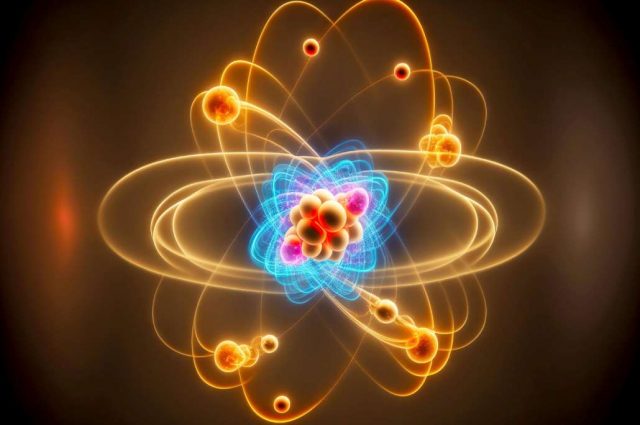Are you curious about what are atoms made of? Atoms are the building blocks of all matter, and understanding their anatomy is crucial to understanding the world around us. Despite having been studied for centuries, the complexity of atoms still holds many mysteries. As the focus of both scientific and philosophical debates, atoms are intricately woven into the fabric of our world.
Atom anatomy refers to the structure and components of atoms and the ways in which they interact. Atoms are the smallest units of matter that maintain their properties and are often called the “building blocks” of the universe. They consist of three fundamental particles – protons, neutrons, and electrons – which are arranged in a specific way to give each atom its unique properties.
Breaking down the components of atoms provides unique insights into their behavior, but requires an understanding of complex scientific concepts. This blog post will delve in-depth into the anatomy of atoms, explaining the roles each particle plays and how they interact.
Protons
Protons are subatomic particles that are one of the basic building blocks of atoms. They are positively charged particles that are located in the nucleus of an atom along with neutrons. Protons are unique to each element and determine the atomic number of an atom.
The number of protons in an atom determines its chemical properties and how it reacts with other atoms. Protons are fundamental to the behavior of matter and are essential to the core stability of an atom. Without protons, atoms would not exist and the universe as we know it would be completely different.
Neutrons
While protons have a positive charge and electrons have a negative charge, neutrons have no electric charge, making them unique. Neutrons are located in the nucleus of the atom alongside protons, tightly bound together by a strong force. They are slightly heavier than protons and were discovered in 1932, by English physicist James Chadwick.
Neutrons play a vital role in determining the stability and properties of an atom, particularly when it comes to nuclear reactions. Their ability to change a substance’s atomic mass while remaining neutral charge-wise makes them particularly useful in nuclear technology and medical applications, such as cancer treatment.
Electrons
They are negatively charged subatomic particles that orbit around the nucleus of an atom in specific energy levels or electron shells. Electrons play a crucial role in determining the chemical and physical properties of atoms, and in understanding how atoms bond and interact with each other to form molecules.
The electron configuration of an atom determines its chemical reactivity and bonding patterns and therefore plays a vital role in various chemical processes and reactions. Additionally, electrons are essential in the functioning of electronics and electrical devices, as they are responsible for the flow of current and the production of energy.
Nucleus
It is located at the center of an atom and houses a composition of protons and neutrons. As one of the primary components of an atom’s structure, the nucleus plays a crucial role in determining the atom’s properties and behavior.
The number of protons in a nucleus determines the atomic number of the element to which the atom belongs. Furthermore, the arrangement of neutrons and protons within the nucleus influences the stability, radioactivity, and energy state of an atom.
Outer Shell
The outer shell is the outermost layer of an atom, and it plays a crucial role in the chemical behavior of that atom. It is made up of the electrons that are farthest away from the nucleus, which means that these electrons are the most easily influenced by outside forces.
The number of electrons in the outer shell determines the chemical properties of an atom and how it interacts with other atoms. Atoms with full outer shells tend to be very stable and unreactive, while those with partially filled outer shells tend to be much more reactive and form chemical bonds with other atoms.
Net Charge
Atoms are considered electrically neutral, which means they have an equal number of positively charged protons and negatively charged electrons. However, in certain cases, an atom may gain or lose electrons, resulting in a net change in its charge. This process is referred to as ionization, and an ionized atom is called an ion. When an atom loses one or more electrons, it gains a positive charge, and when it gains one or more electrons, it becomes negatively charged.
Atomic Number
In simple terms, Atomic Number refers to the number of protons present within the nucleus of an atom of a particular element. It is a defining characteristic of any element and helps distinguish it from other elements. The Atomic Number is represented by the symbol “Z” and is a whole number, ranging from 1 to over 100 for known elements.
It is also used to determine the electronic configuration of an element and its position on the periodic table. The Atomic Number is a fundamental concept in chemistry and serves as the basis for the classification and analysis of chemical elements.
Atomic Mass
It refers to the total number of protons and neutrons present in the atomic nucleus. Atomic mass is expressed in atomic mass units (amu) or daltons (Da) and is usually denoted by the symbol A. Generally, the atomic mass of an atom is assumed to be equal to the number of nucleons (protons + neutrons) present. However, in some cases, the atomic mass may differ from this number due to the presence of isotopes.
Isotopes are atoms of the same element that have a different number of neutrons in their atomic nuclei, but the same number of protons, causing the atomic mass to vary accordingly.
Conclusion
Atoms are the fundamental building blocks of all matter in the universe, and their components define everything we observe around us. The study of atom anatomy has opened up new worlds of scientific research, including the fields of physics, chemistry, and biology. With advancements in technology, our understanding of atoms continues to grow, as we uncover new properties and behaviors that shape the world we inhabit.
As we continue to peel back the layers of atom anatomy, we may uncover insights into the mysteries of the universe and the workings of the smallest particles that make up everything we see and touch.

Speaks from heart, always too passionate and driven by emotions. Spins the words with kindness & sharpness, intriguing your ever-inscrutable minds.




